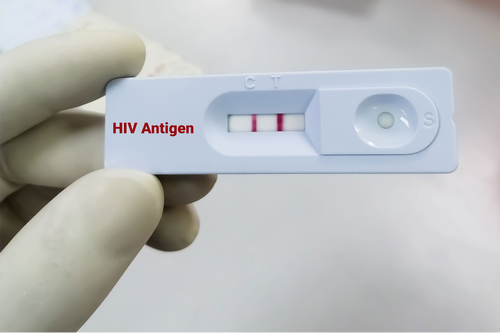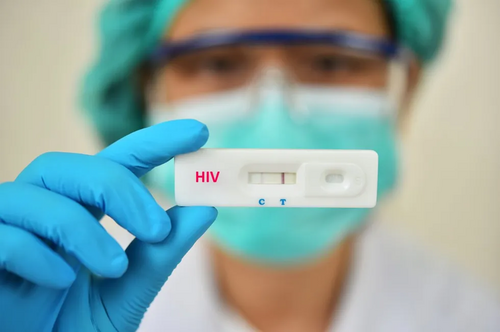Improving the Diagnosis and Treatment of Neurosyphilis
Newly Discovered Toxins Made by Bacteria May Lead to New Antibiotics and Antifungals
How Permethrin Cream Can Banish the Bugs
- Introduction
- Understanding Permethrin Cream and Its Uses
- How Permethrin Cream Works to Eliminate Parasites
- When Should You Use Permethrin Cream?
- How to Apply Permethrin Cream for Optimal Results
- Side Effects and Safety Considerations
- Tips for Preventing Reinfestation
- Frequently Asked Questions About Permethrin Cream
UCSF Study Examines Childhood Development after Maternal Covid Infection
COVID: Long Term Increased Risk of Heart Disease Associated with ABO Blood Type

Understanding HIV and Its Transmission
What is HIV?
Human Immunodeficiency Virus (HIV) is a virus that attacks the body’s immune system, specifically the CD4 cells (T cells). Over time, if untreated, it can lead to Acquired Immunodeficiency Syndrome (AIDS), which severely weakens the immune system and makes it difficult for the body to fight off infections. The good news? With proper medical care, HIV can be managed, and those living with the virus can lead healthy, fulfilling lives. (more…)HIV Prevention and Care for Escorts: The Importance of Regular Testing
The escort should be informed about the latest sexual health and facts on how HIV is and is not transmitted....
Frocks, Smocks, and Lab Coats: Versatile Garments for Healthcare and Hospitality
Navigating Flu Season: Prevention and Treatment Tips
Understanding the Flu
Flu is a contagious respiratory illness caused by influenza viruses. It spreads through droplets made when people with the flu cough, sneeze, or talk. You can also contract the flu by touching a surface or object that has the virus on it and then touching your mouth, nose, or eyes. The flu typically comes on suddenly. Common symptoms include fever, chills, muscle aches, cough, congestion, runny nose, headaches, and fatigue. Unlike the common cold, which develops gradually, the flu can knock you off your feet quickly. (more…)Onychomycosis, commonly referred to as nail fungus, is a common ailment that affects millions of people who feel uncomfortable about their nails. However, current advances in cheap treatment options have encouraged people in their search for efficient and affordable treatment. Gone are the days when the treatment of nail fungus would require one to pay a lot of money for prescriptions such as efinaconazole generic or opt for complicated surgery.
Today, new approaches successfully combine the possibility of being relatively inexpensive for patients and effective in treating diseases. (more…)How COVID-19 Has Changed Medical Research in Global Health
 COVID-19 is a virus that devastated the healthcare systems around the globe. The main reason for this devastation was the speed of the spreading. Because it was spreading so fast, hospitals weren’t able to accommodate so many patients.
We needed to figure out a better approach to dealing with the pandemic. So, this is where most of the people on Earth stood together by being apart. We were in lockdown, but our scientists and governments collaborated more on finding the right solution.
COVID-19 is a virus that devastated the healthcare systems around the globe. The main reason for this devastation was the speed of the spreading. Because it was spreading so fast, hospitals weren’t able to accommodate so many patients.
We needed to figure out a better approach to dealing with the pandemic. So, this is where most of the people on Earth stood together by being apart. We were in lockdown, but our scientists and governments collaborated more on finding the right solution.
What Was the COVID-19 Impact on Research Priorities?
One of the major impacts of the pandemic was the speed of research. Because of the urgency and the need for a quick response, research was focused on the COVID-19 virus and therapy and vaccine development for it. The development of vaccines was heavily prioritized, but this does not imply that it is not being done presently. Epidemiology and therapeutic regimens continue to see some initiatives. However, research remains a priority with ongoing trials on many things you can participate in (link to site). This required a lot of funding and resources, so governments, private sectors, and international organizations collaborated and helped out the research process. We’ve proven that we can adapt in no time, and respond to great threats effectively and swiftly. (more…)Causes and Prevention of Foodborne Illness: Everything You Need to Know
 Foodborne illness, or food poisoning as many call it, is a widespread and potentially life-threatening health issue.
Therefore, understanding the causes and prevention of foodborne illness is crucial for everyone, from home cooks to professional chefs, food industry workers, and consumers.
This article explores the causes of foodborne illness, identifies high-risk foods, and provides essential strategies for preventing this health issue.
Foodborne illness, or food poisoning as many call it, is a widespread and potentially life-threatening health issue.
Therefore, understanding the causes and prevention of foodborne illness is crucial for everyone, from home cooks to professional chefs, food industry workers, and consumers.
This article explores the causes of foodborne illness, identifies high-risk foods, and provides essential strategies for preventing this health issue.
Common Causes of Foodborne Illness
Symptoms of foodborne illness can show up quickly, sometimes within hours after you eat or drink a contaminated meal, or they might take a few days to appear. The following is an in-depth look at the common causes: (more…)NIH Study Suggests Prion Disease Unlikely to Spread from Deer to Humans
ESCMID: Basel Scientists Developing Breath Test for Antibiotic Monitoring
UCI Develops AI Model To Determine Best Antibiotic Match for an Individual Patient
- Antibiotic resistance, which occurs when germs like bacteria and fungi mutate to defeat the drugs designed to kill them, is a major public health threat.
- Data show that 40-50% of patients hospitalized with pneumonia receive broad spectrum antibiotics when they do not need them.
- Helping clinicians tailor antibiotic prescriptions to individual patients can improve patient outcomes by preserving healthy bacteria in the body and reducing the risk of future antibiotic resistance.
UCSD Study Finds X’s Community Notes Fosters Learning Environment Rather Than Censorship Model
 John W. Ayers, PhD MA
Vice Chief of Innovation | Assoc. Professor
John W. Ayers, PhD MA
Vice Chief of Innovation | Assoc. ProfessorDiv. Infectious Disease & Global Public Health University of California San Diego Since the World Health Organization declared an ‘infodemic’ of misinformation, there have been surprisingly few achievements to celebrate. X's Community Notes have emerged as an innovative strategy to address misinformation as reported in the latest issue of JAMA.
In late 2022, X introduced Community Notes. This novel approach empowers volunteer, independent, anonymous, and ideologically diverse contributors to identify posts containing misinformation and to rectify misinformation by appending informative "notes" to suspect posts. The process is controlled by the public, instead of decision-makers at the company. Most importantly the system is open-sourced so it can be studied by external scientists.
Regional Decolonization Efforts in Hospitals and Nursing Homes Led to Reduced Infections, Hospitalizations, Costs and Deaths
- This study arose from a growing concern about the increasing number and presence of antibiotic-resistant bacteria causing colonization and infection in hospitals and long-term care. CDC has had a longstanding interest in the value of regional control of these contagious pathogens and they funded this study.
The study was actually in two parts:
- –1) Simulate various infection prevention strategies in a model and see which works best, and then
- - 2) Do it in real life. The SHIELD project was the real-life example of our simulation finding that decolonization would work the best to prevent harm from antibiotic-resistant bacteria.
- The regional idea is that it takes all of us working together – hospitals, nursing homes, and long-term acute care hospitals – to prevent the spread and sharing of contagious pathogens. What we can accomplish together is far greater than what any of us can do alone.
- In this study, decolonization was the use of topical chlorhexidine antiseptic soap and povidone-iodine nasal ointments to reduce potentially harmful bacteria on the body during times when patients and residents may be at risk for infection. We swapped out bathing and showering soap with CHG in participating facilities and ensured that staff knew to clean the body well, including wounds, devices, and rashes where germs can hide and cause infection. For CHG, this involved 4% rinse off product in the shower and 2% no-rinse CHG for bed baths.
Decreases and Pronounced Geographic Variability in Antibiotic Prescribing in Medicaid
MS: Harvard Chan Study Further Identified Serologic Response to Epstein-Barr Virus
Department of Nutrition Harvard T.H. Chan School of Public Health
Boston, MA 02115 MedicalResearch.com: What is the background for this study? Response: In a study published in Science in 2022, we reported compelling evidence that infection with the Epstein-Barr virus is the leading cause of Multiple Sclerosis. This is a follow-up study to investigate more in depth whether the antibody response to EBV is distinct in individuals with MS compared to individuals without MS and whether there is a part of EBV that the immune response is particularly targeting. For this purpose we assessed the immune response to all protein parts (peptides) of EBV and their association with MS. Previous studies could only look at parts of EBV and this is the first study looking at all EBV peptides. Antibodies to EBV (especially to a protein called EBNA1) are known to be overall higher in individuals with MS, so we also tested whether immune response overall or the immune response to specific EBV protein parts was more important. If the immune response to a specific EBV protein part (peptide) would be standing out or distinguishing individuals with MS, we hypothesized, it could point to a specific mechanism of how EBV may cause MS, i.e. it could point for example towards “molecular mimicry”, which is when antibodies targeting a pathogen start targeting a body-own structure (for example in the brain) which resembles the protein parts of the pathogen. (more…)
Rapid Rise in Legionnaires’ Disease Infections As Air Pollution Decreases
NYU Study Finds Genetic Variant May Protect Against Severe Illness From COVID-19
NEJM: Cognitive Deficits Smaller With Later COVID Variants
People Sick With Contagious Respiratory Viruses Often Conceal Illness for Personal or Professional Reasons, Regardless of Effects on Others
 Wilson N. Merrell
Ph.D. Student
Department of Psychology
University of Michigan
MedicalResearch.com: What is the background for this study?
Response: From the common cold to COVID-19, people get sick all the time. Because our social worlds don’t pause just because we are feeling ill, we often still need to navigate in-person events ranging from work and school to first dates and family dinners even while we’re feeling under the weather. In these kinds of social situations, do we always tell others when we’re feeling sick, or are there times when we may want to downplay our illness? After all, we tend to react negatively to, find less attractive, and steer clear of people who are sick with infectious illness. To the extent that we want to avoid these negative social outcomes while sick, it therefore makes sense that we may take steps to cover up our sickness in social situations. Given that this concealment could serve individual social goals (like allowing you to connect with others) at the cost of broader harms to public health (through the spread of infectious disease), we found this behavior both theoretically novel and practically timely.
(more…)
Wilson N. Merrell
Ph.D. Student
Department of Psychology
University of Michigan
MedicalResearch.com: What is the background for this study?
Response: From the common cold to COVID-19, people get sick all the time. Because our social worlds don’t pause just because we are feeling ill, we often still need to navigate in-person events ranging from work and school to first dates and family dinners even while we’re feeling under the weather. In these kinds of social situations, do we always tell others when we’re feeling sick, or are there times when we may want to downplay our illness? After all, we tend to react negatively to, find less attractive, and steer clear of people who are sick with infectious illness. To the extent that we want to avoid these negative social outcomes while sick, it therefore makes sense that we may take steps to cover up our sickness in social situations. Given that this concealment could serve individual social goals (like allowing you to connect with others) at the cost of broader harms to public health (through the spread of infectious disease), we found this behavior both theoretically novel and practically timely.
(more…)

























